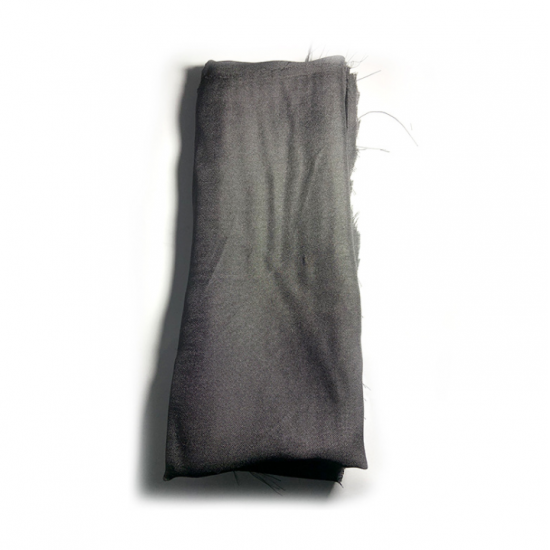Lith Corporation, founded in 1998 by a group of material science doctor from Tsinghua University, has now become the leading manufacturer of battery lab&production equipment. Lith Corporation have production factories in shenzhen and xiamen of China.This allows for the possibility of providing high quality and low-cost precision machines for lab&production equipment,including: roller press, film coater,mixer, high-temperature furnace, glove box,and complete set of equipment for research of rechargeable battery materials. Simple to operate, low cost and commitment to our customers is our priority.
Carbon Cloth: A Comprehensive Guide
Carbon cloth, also known as carbon fiber fabric or graphite cloth, is a highperformance material made from woven carbon fibers. It is widely used in various industries due to its exceptional properties, including high strengthtoweight ratio, excellent thermal conductivity, and chemical resistance.
Below is an overview of carbon cloth, including its composition, properties, applications, manufacturing process, and pricing.
●1. What Is Carbon Cloth?
Carbon cloth is a flexible fabric composed of thin strands of carbon fibers woven together. These fibers are primarily made of carbon atoms arranged in a crystalline structure, giving the material its remarkable strength and durability.
Key Characteristics
Lightweight: Much lighter than metals like steel or aluminum.
High Strength: Offers superior tensile strength compared to many other materials.
Thermal Stability: Maintains its properties at high temperatures.
Chemical Resistance: Resistant to corrosion and degradation from chemicals.
Electrical Conductivity: Can conduct electricity depending on its weave and treatment.
●2. Composition and Structure
Carbon Fibers
Carbon fibers are produced by heating precursor materials (e.g., polyacrylonitrile or PAN) in an oxygenfree environment to remove noncarbon elements.
The resulting fibers consist of long chains of carbon atoms bonded together in a hexagonal lattice structure.
Weave Patterns
The weave pattern of carbon cloth affects its mechanical properties and appearance:
Plain Weave: Simple overandunder pattern; balanced properties but prone to fraying.
Twill Weave: Diagonal pattern; more pliable and less prone to fraying.
Satin Weave: Smooth surface with fewer intersections; ideal for complex shapes.
Unidirectional Fabric: Fibers aligned in one direction for maximum strength along that axis.
●3. Properties of Carbon Cloth
| Property | Description |
|||
| StrengthtoWeight Ratio | Extremely high, making it ideal for weightsensitive applications. |
| Thermal Conductivity | Excellent heat transfer capabilities, useful in thermal management systems. |
| Electrical Conductivity | Can be conductive, depending on the weave and treatment. |
| Chemical Resistance | Resists corrosion and degradation from acids, bases, and solvents. |
| Flexibility | Flexible enough to conform to complex shapes while maintaining structural integrity. |
●4. Manufacturing Process
The production of carbon cloth involves several steps:
1. Fiber Production:
Precursor materials (e.g., PAN) are spun into fibers and undergo stabilization, carbonization, and oxidation processes.
2. Weaving:
Carbon fibers are woven into fabric using looms, creating various patterns like plain, twill, or satin weaves.
3. Finishing:
The cloth may undergo additional treatments, such as sizing or coating, to enhance its properties or protect it during handling.
Carbon Cloth Electrode Cloth
●5. Applications of Carbon Cloth
Carbon cloth finds use in numerous industries due to its unique combination of properties:
Aerospace
Used in aircraft components like wings, fuselages, and interior panels for lightweight yet strong structures.
Automotive
Employed in car parts like body panels, chassis, and brake systems for improved performance and fuel efficiency.
Energy Storage
Utilized in lithiumion batteries and supercapacitors as electrodes due to its electrical conductivity and surface area.
Medical
Used in prosthetics, orthotics, and surgical instruments for lightweight and durable solutions.
Sports and Recreation
Commonly found in sports equipment like tennis rackets, bicycles, golf clubs, and fishing rods.
Industrial
Applied in filtration systems, gaskets, seals, and thermal insulation materials.
Electronics
Used in electromagnetic interference (EMI) shielding and heat sinks.
●6. Advantages and Disadvantages
Advantages
Lightweight and strong.
Excellent thermal and electrical conductivity.
Corrosionresistant.
Versatile and customizable.
Disadvantages
Expensive compared to traditional materials.
Brittle and prone to cracking under certain conditions.
Difficult to repair once damaged.
Requires specialized tools and techniques for machining.
●7. Pricing of Carbon Cloth
The cost of carbon cloth varies based on factors such as fiber type, weave pattern, quality, and supplier. Below are approximate price ranges:
Standard Carbon Cloth: $10–$30 per square meter.
HighQuality Carbon Cloth: $30–$100 per square meter.
Custom or Specialty Grades: $100+ per square meter.
Factors influencing price include:
Fiber Type: Highergrade fibers (e.g., aerospacegrade) are more expensive.
Weave Pattern: Complex weaves like satin or unidirectional fabrics tend to cost more.
Thickness: Thicker cloths generally cost more due to increased material usage.
Supplier: Prices vary between manufacturers and distributors.
●8. Future Trends in Carbon Cloth
1. Cost Reduction:
Advances in manufacturing technologies aim to lower production costs, making carbon cloth more accessible.
2. Enhanced Properties:
Research focuses on improving mechanical, thermal, and electrical properties for broader applications.
3. Sustainability:
Efforts are underway to develop recyclable carbon fibers and reduce environmental impact.
4. New Applications:
Emerging fields like renewable energy, wearable technology, and space exploration drive innovation in carbon cloth usage.
●Conclusion
Carbon cloth is a versatile and highperformance material with applications spanning multiple industries. Its unique combination of strength, lightness, and durability makes it indispensable in modern engineering and manufacturing. While it comes at a premium price, its benefits often outweigh the costs in critical applications.
If you're considering using carbon cloth for your project, understanding its properties, manufacturing process, and potential applications will help you make informed decisions. Let me know if you'd like further details or guidance!


 +86 13174506016
+86 13174506016 Louis@lithmachine.com
Louis@lithmachine.com +86 18659217588
+86 18659217588
 18659217588
18659217588